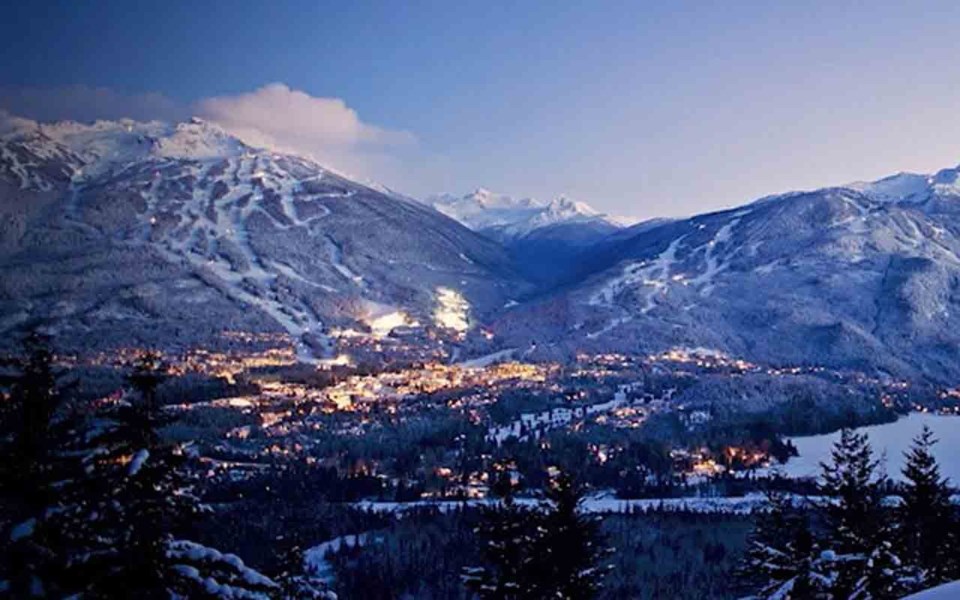Whistler is heading into one of those milestone moments — one of those times people will look back on 20 years from now and say, "Ah, yes, that was when the resort re-imagined what it wanted to be and how it wanted to feel."
Interestingly, when asked what he wanted Whistler to feel like in 20 years my 17-year-old son said, "... Like it did 15 years ago."
Sigh.
But we can't move forward if we are looking backwards — as they say, we are not going that way.
That's not to say that we shouldn't pay any attention to the history that has moulded Whistler. In fact, we need to remind ourselves of where we came from all the time, but that doesn't mean that we can't think about changes and visions for our community.
Let's be honest: the resort has rapidly changed over the last 40 years, and while we are struggling now with growth-related issues, it remains one of the most beautiful places, and one of the most amazing communities, to live in in the world.
On Monday night, March 5, about 200 people filled the great hall of the Whistler Conference Centre to offer input into our updated Official Community Plan (OCP).
(As an aside — did you know the conference centre was supposed to have an ice rink, swimming pool, squash courts, coffee shop and more? Budget for the 1980 plan? A mere $5.8 million. To read more about how it turned into a conference centre, head to Museum Musings on page 62.)
A few things struck me about the evening. First was the high value those at the meeting put on our natural environment. It was clear from the poster boards covered in sticky notes around the outside of the meeting room that nature, as it exists today around us, is essential not only to our success but also for our well being.
Claire Ruddy, AWARE's executive director, was frank in her address to the crowd: "Whistler's natural environment should be recognized as our community's greatest asset. It provides the foundation on which Whistler's economy, culture and opportunities for healthy living are based...
"The World Economic Forum generates a report each year and lists the top five global risks in terms of impact and... four of the top five are all risks tied to the environment: natural disasters, extreme-weather events, water crisis and failure of climate change mitigation and adaptation..."
(The fifth is the threat from weapons of mass destruction.)
Ruddy, speaking to the converted I'm sure, nevertheless stressed that Whistler cannot plan for the future in the global context without making stewardship of our environment front and centre in our visioning.
This is a unique year as it is not only the year we are once again trying to get a new Official Community Plan (OCP) — it is also a municipal election year.
Those who run our resort need to take a firm leadership role in achieving measures needed to protect our natural environment — some of which have been lingering for years on the books.
The second thing that struck me was the total absence of any discussions of how we can involve our First Nations neighbours in our visioning.
We all know by now that the 2013 OCP went off the rails in 2014 after our local First Nations challenged the document in court, arguing there was not enough consultation. The B.C. Supreme Court agreed, sending the resort back to the drawing board on its OCP. The hope is to now get one in place this year.
Last April, a Memorandum of Understanding (MOU) between the Resort Municipality of Whistler (RMOW), the Squamish and Lil'wat First Nations, Whistler Blackcomb (WB) and the provincial government was signed, signalling a commitment to collaboration. Part of that agreement was the support by First Nations for the OCP.
The MOU came within weeks of the provincial approval of a new 60-year Master Development Agreement for WB, which took place last February.
While not legally binding, the MOU listed a number of key interests the parties agreed to explore as well as support for the OCP. They included: the transfer of the Kadenwood Lands to the First Nations in exchange for the Emerald Lands; appropriate development opportunities at Kadenwood, South Base or other suitable locations in the Controlled Recreation Area (CRA); an approach to the value of the options lands required for the South Base opportunities, or other suitable locations in the CRA; a long-term property tax exemption for the Squamish-Lil'wat Cultural Centre; development of a management planning process with respect to Crown Lands in RMOW boundaries; recognition in the OCP of the Kadenwood, South Base or other suitable development opportunities within the CRA; and consideration from the Ministry of Community, Sport and Cultural Development to remove the requirement for ministerial approval of future OCPs, or amendments to them.
The community will have further opportunity to give input and to find out more about the relationships that will make our new OCP valuable as a vision for our future.
But if we really want to make it work we need strong protections for our natural environment and a clear understanding of how partnerships will impact our OCP.




